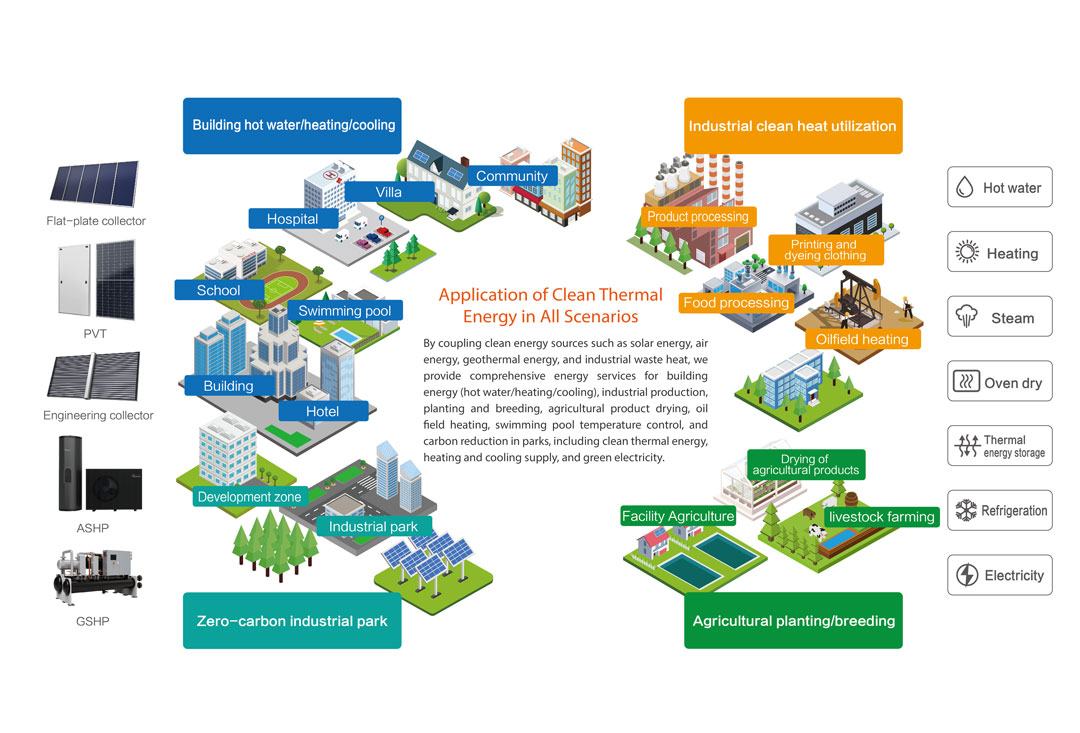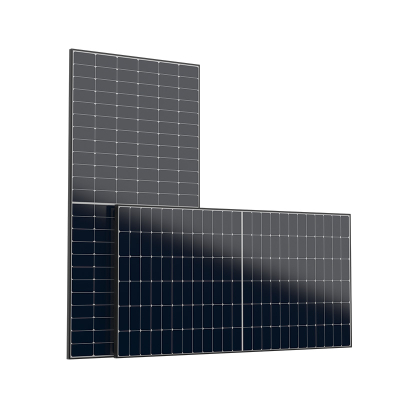SOLETKS Clean Energy Solutions Empower Green Development Across Multiple Sectors
Against the backdrop of the in-depth advancement of the "dual carbon" goals (carbon peaking and carbon neutrality), the issues of high consumption and high emissions associated with traditional energy sources have become increasingly prominent, hindering the green transformation of industries. Focusing on the energy-use pain points in various fields, SOLETKS takes diversified clean energy technologies as its core, tailors solutions, and promotes the transformation of "zero-carbon energy use" from a concept to practice, injecting new momentum into green development in sectors such as construction, industry, agriculture, and new infrastructure.
I. Building Energy Use: Two Systems Reshape the Energy Supply Pattern
As a key area of energy consumption, traditional energy-use models in buildings rely on fossil fuels, resulting in high costs and heavy pollution. With solar heating systems and thermoelectric twin systems at its core, SOLETKS has built a full-scenario clean energy-use system.
The solar heating system centers on high-efficiency flat-plate collectors, combined with heat storage devices and auxiliary energy systems. Even in low-temperature winter environments, it can still stably absorb solar energy. During the day, solar energy is prioritized for building heating; at night or on cloudy days, the auxiliary energy system starts automatically, ensuring the indoor temperature remains within the comfortable range of 18℃-22℃. This minimizes fossil energy consumption, and the operation process is noise-free and emission-free, balancing environmental protection and living experience.
The thermoelectric twin system breaks the limitation of traditional photovoltaic (PV) panels, which "only generate electricity but do not produce heat". By integrating two independent systems—one for electricity conduction and the other for heat conduction—behind the PV panels, it realizes "combined heat and power generation". During the day, electricity generated by the PV panels can directly meet the electricity needs of buildings, such as lighting and home appliance operation; meanwhile, the waste heat produced by the PV panels during operation is collected by the heat conduction system and converted into domestic hot water. More importantly, this system can also be linked to building heating and cooling: in winter, waste heat is used to assist heating, and in summer, it drives absorption chillers for cooling. It is equivalent to having four functions in one: "PV power station + water heater + heating system + air conditioner". In practical applications, the energy consumption of commercial buildings has been reduced by over 30%, and residents' energy expenses have been cut by 25%-30%.
II. Industrial Heat Use: Three-Technology Coupling Breaks the Dilemma of High Consumption
In industrial production, processes such as heating and cooking have a strong demand for thermal energy. Traditional coal-fired and gas-fired boilers suffer from high consumption, high emissions, and low thermal efficiency. SOLETKS has integrated four technologies—air-source heat pumps, ground-source heat pumps, high-efficiency solar collectors, and solar steam—to create a multi-energy coupling system, solving the problem of industrial heat use.
Air-source heat pumps: Adopting low-temperature adaptive technology, they can still efficiently absorb heat from the air even at -25℃, meeting medium-to-low temperature heat demands of 50℃-80℃. Their operating energy consumption is only 1/4 of that of traditional electric heating.
Ground-source heat pumps: Relying on stable heat exchange in the underground constant temperature layer, they are not affected by weather and can continuously provide thermal energy of 80℃-120℃, suitable for industries such as chemical engineering and pharmaceuticals that have high requirements for thermal energy stability.
Solar steam systems: Equipped with high-efficiency solar collectors, they can generate high-temperature steam of 100℃-120℃, meeting the process needs of food processing, textile printing and dyeing, etc. The energy cost is 40% lower than that of gas-fired boilers.
At the same time, the system uses "solar energy + heat pump" coupling technology to increase the base source-side temperature, significantly reducing the energy consumption of heat pumps. Furthermore, with the help of an intelligent control system, flexible energy switching is achieved: solar energy is prioritized when it is sufficient; when the supply is insufficient, it automatically switches to heat pumps; and in extreme weather, it can also be connected to off-peak electricity for supplementary supply, ensuring continuous and stable production. Based on the energy-use characteristics of different industries, SOLETKS also provides a complete set of energy-saving transformation solutions to meet the needs of various factories.
III. Drying Field: DVC Collectors Safeguard Quality
Traditional drying methods generally have problems such as high energy consumption and difficulty in controlling temperature and humidity, which easily lead to material deterioration and quality degradation. With solar energy as its core energy source, SOLETKS's DVC air collector provides a stable and clean solution for drying scenarios.
This collector continuously supplies thermal energy through solar energy, and with the support of an intelligent temperature and humidity control module, it can accurately control the temperature of the drying room within 30℃-80℃, with a humidity fluctuation of no more than ±5%. This ensures uniform drying of materials and maximizes the retention of product quality. To address the energy gap at night or during consecutive cloudy days, the system can be connected to auxiliary energy sources to achieve all-weather stable operation, suitable for drying various materials such as agricultural fruits and vegetables, industrial hardware, and medicinal materials.
IV. Agricultural Planting and Breeding: Two Systems Improve Quality and Efficiency
Agricultural production is significantly affected by climate. Low temperatures in winter and high temperatures in summer can easily lead to reduced crop yields and lower survival rates of livestock and poultry. With soil constant temperature systems and solar hot air systems as its core, SOLETKS provides a stable environmental guarantee for agricultural planting and breeding.
The soil constant temperature system controls the soil temperature within the suitable range of 15℃-25℃ through heating pipes buried in the soil, unaffected by changes in external air temperature.
The solar hot air system is designed specifically for breeding scenarios: in winter, the collector absorbs solar energy and converts it into hot air to heat the breeding houses, maintaining a suitable temperature of 20℃-25℃.
From construction to industry, and from agriculture to new infrastructure, SOLETKS has broken the limitations of traditional energy applications through technological innovation. In the future, SOLETKS will continue to expand the application scenarios of its solutions, optimize technical performance, provide support for more industries to achieve green transformation, and contribute to the realization of the "dual carbon" goals.





